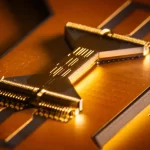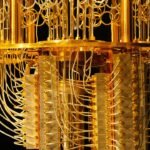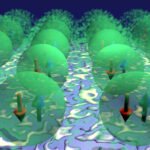Scientists Reveal the Secrets Behind Record-Breaking Tandem Solar Cell
Researchers at the Helmholtz-Zentrum Berlin (HZB) have achieved a significant breakthrough in tandem solar cell technology, combining a silicon base with a perovskite top layer. These tandem solar cells have set new efficiency records, with the ability to convert around one-third of incident sunlight into electrical power. This achievement not only marks a notable advancement in the field of inexpensive solar technology but also underscores the collaborative efforts of HZB’s perovskite and silicon experts.
Led by Prof. Dr. Steve Albrecht, the perovskite tandem solar cell research group at HZB has combined their knowledge to create an impressive device called the Enchilada Trap. This device utilizes a branching architecture of electrodes to enhance the capabilities of quantum computers, exemplifying the power of interdisciplinary collaboration.
This remarkable tandem solar cell garnered attention when it achieved a world record efficiency of 32.5% in converting sunlight into electrical energy. Although this record was later surpassed, the HZB team remains at the forefront of the field. Their recent publication in the journal Science offers detailed insights into the technical underpinnings of their achievement, presenting meticulous measurements and comprehensive data sets.
The team’s success is attributed to an enhanced perovskite compound and an innovative surface modification technique employing a novel piperazinium iodide molecule. This modification effectively minimizes charge recombination and associated losses, pushing the efficiency of the tandem cell to new heights.
By utilizing advanced measurement techniques, the researchers delved into the fundamental processes occurring at various interfaces and layers within the tandem cell. This allowed them to optimize the cell’s performance by comprehensively understanding and manipulating these processes. The combined efforts of different experts and institutions contributed to this achievement, from optoelectronic measurements to synthesizing surface-modifying molecules.
This breakthrough is part of a broader trend of efficiency improvements in solar cell technology. Over the past few years, various research institutes and companies have been making strides in enhancing solar cell efficiency. The collaboration between silicon and perovskite materials has led to significant advancements in recent years, with HZB consistently pushing the boundaries.
Prof. Albrecht acknowledges the transformative potential of these advancements in contributing to sustainable energy solutions and combating climate change. HZB’s scientific director, Prof. Bernd Rech, highlights the economic viability of this technology, with the manufacturing processes for tandem solar cells being already available and potentially cost-effective.
While achieving remarkable efficiency levels, the focus now shifts toward enhancing the stability of these tandem solar cells for outdoor use. With continuous efforts and collaborations, the prospects of widespread and efficient solar energy utilization become increasingly promising.



































